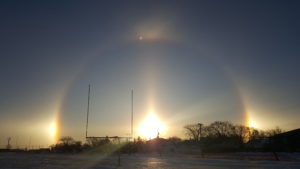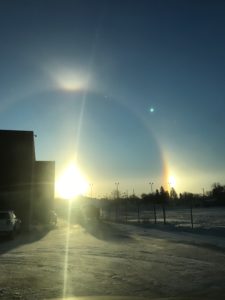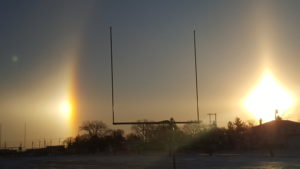 This morning Manitobans woke up to a temperature of -25oC (-13oF), with a windchill of -37oC (-35oF). So cold. Not as cold as it can be or has been, but still cold enough that it freezes your face almost the instant you step outside. Your eyelashes freeze together and even though you’re wearing a base layer and lined pants, your thighs feel like they are getting cut up by tiny ice particles. It sure is pretty though.
This morning Manitobans woke up to a temperature of -25oC (-13oF), with a windchill of -37oC (-35oF). So cold. Not as cold as it can be or has been, but still cold enough that it freezes your face almost the instant you step outside. Your eyelashes freeze together and even though you’re wearing a base layer and lined pants, your thighs feel like they are getting cut up by tiny ice particles. It sure is pretty though.
The hoar frost on the bare trees creates a scene that looks like you could have travelled through the wardrobe into Narnia (minus Mr. Tumnus). The snow on the fields sparkle as if stars fell from the sky and landed softly on the white pillows of snow. Occasionally, as was this morning, as the moon is still visible to the west, the sun rises in the east with a glow that is so magnificent that you can’t help but have a smile on your frozen face. You look up and notice two orbs of light surrounding the slowly rising sun (or an entire halo of light). Sundogs (mock suns or parhelion) consists of glowing spots around the sun that are created by sunlight refracting off plate shaped ice crystals in the cirrus clouds (those wispy clouds that are usually higher up in the sky). This isn’t a common sight for most, but for us here in the colder parts of Canada, it is something that appears fairly often in the winter months (because they typically appear when it’s extremely cold out and when the sun is closer to the horizon); some sundogs are more vibrant than others, sometimes there are three, but they are always a sight to see.
Ancient Greeks came to accept the presence of sundogs as fairly accurate rain forecasters as the ice crystals that make these phenomena also form cirroform clouds, which are the typical cloud formation that foretells a precipitating warm front. Aristotle even mentions seeing mock suns and the Greek poet, Aratus mentions them in his catalogue of weather signs.
If you’re looking to take a cold-weather adventure to see these amazing halos (and perhaps other beautiful scenery), we have many tours that take you to areas that would allow you to experience this and anything else you would like to experience. Check out our Arctic tours here.
So, although some of us live in a place where the wind hurts our faces and our mascara runs enough to make us look like raccoons because our eyelashes freeze together when we go outside, we can still view beautiful weather phenomena during the day as the sun is rising and the moon is still visible to the west.











